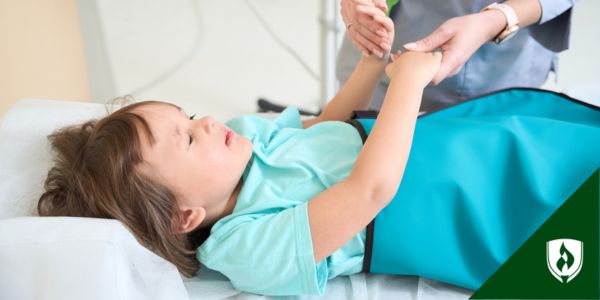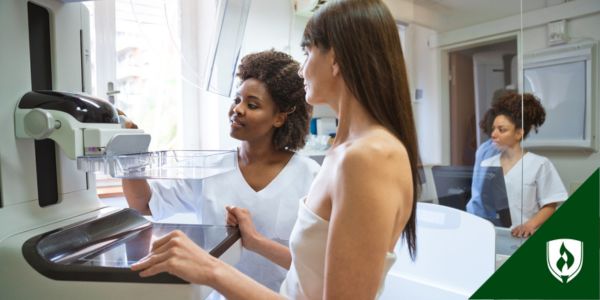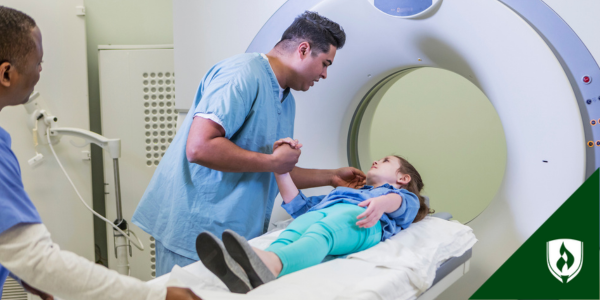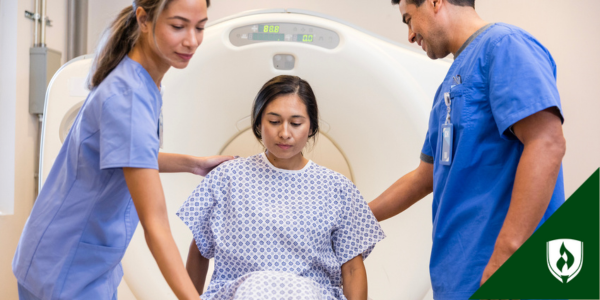
New cases in breast cancer, the second most common cancer in women, affect more than 230,000 women annually, killing around 40,000 each year.
Enter the mammogram: a screening tool that uses low-energy x-rays to examine the breasts for cancerous masses. This testing procedure gained acceptance as a screening tool in the mid-1960s and has been proven to reduce the amount of deaths caused by breast cancer by a third.
The American Cancer Society recently updated their recommendations on how often and at what age women should get mammograms. Curious about what this means for you? Read on to learn more about this life-saving procedure and the options available for testing.
What is a mammogram?
Mammography is one of the best ways doctors can identify breast cancer at an early stage before a mass is large enough to be felt. This procedure is usually coupled with a manual breast exam completed by one’s physician. It’s also recommended that women give themselves self-breast exams on a regular basis.
The mammogram process involves a breast-imaging technologist using a machine to flatten the breast tissue of a patient for more even imaging. The technologist then transfers the image of the breast onto x-ray film, and a radiologist interprets the findings. A biopsy may be ordered if a suspicious mass is found.
What are the new recommendations?
For years, the American Cancer Society recommended that women over the age of 40 receive mammograms annually. As of October 2015, they are now advocating for a slightly more complicated model.
The new guidance advised from the American Cancer Society is as follows:
- Women should undergo regular screening mammography starting at age 45.
- Women 45 to 54 years of age should be screened annually.
- Women 55 years and older should transition to screening every other year or have the opportunity to continue screening annually.
- Women should have the opportunity to begin annual screening between the ages of 40 and 44 years.
- Women should continue screening as long as their overall health is good and they have a life expectancy of 10 years or longer.
- Clinical breast examination is not recommended for breast cancer screening among average-risk women at any age.
This new change is closer to the recommendation from the U.S. Preventative Services Task Force, which claims that women can safely wait until they’re 50 before beginning to receiving regular annual mammograms.
It’s important to note that this counsel is for women who are at an average risk for breast cancer and haven’t had close family members who have suffered from the disease. Those who know they’re at a higher likelihood for genetic mutation should start screenings sooner than what’s generally recommended.
Why did the recommendations change?
Teams of researchers have discovered that mammograms often detect masses that lead to the treatment of the suspicious tissue—even if the mass turns out not to be cancerous after all. This means that thousands of women have been over-treated for cancer they didn’t actually have, not to mention the unnecessary emotional trauma.
One study found that tumors were more aggressive and fast growing in women diagnosed with breast cancer before menopause. After menopause, they grew more slowly, therefore making it plausible for older women to be screened every other year.
The main reason the recommendation changed is to lessen the frequency of treating benign masses. Another, arguable more-important motive was to avoid the anxiety triggered by receiving that dreaded phone call to find out further testing needs to be conducted due to an abnormal finding.
How is the medical community reacting to the changes?
Many worry that the new change will affect insurance coverage, therefore causing women who would have gotten screened in their forties to wait until an older age. The debate has become so heated among medical professionals that Congress passed legislation in order to overrule USPSTF guidelines, which are grounds for policies regarding government health insurance.
"I don't feel there should be any cause for anxiety with the changes."
Some doctors are pushing back on the new recommendations as well because they are resolved that the most important factor in breast cancer detection is catching it at an early stage. By pushing the suggestion of screening to an older age, many doctors argue that this eliminates a large number of cancer detections that could save lives.
To add to the confusion, some are even questioning the value of mammograms as a whole due to the negative findings of studies. Others don’t feel it’s a big deal at all.
“I don't feel there should be any cause for anxiety with the changes,” says Francine Mullings, breast health advocate and senior breast care radiographer at Imperial College London. “It’s certainly more important that women become breast aware and to follow up on worrying changes.”
What does this mean for you?
As with all things in the medical world, it’s important to advocate for yourself. According to many involved in the heat of the debate, there simply isn’t enough data to provide solid evidence for the best age to start having mammograms or evidence on how often one should get them.
Women should talk with their doctors to discuss what the best option is for them. All cases depend on the individual and her family history, as well as what she feels most comfortable doing. So when in doubt, speak with your doctor!
Take health seriously
As technology and treatments evolve, there are bound to be changes here and there regarding best practices in healthcare and preventive care. The best thing you can do is stay informed and seek the advice of your provider.
The fact that you’re taking the time to read up on new mammogram guidelines suggests that you’re invested in your health and well-being. But not everyone is as proactive in practicing healthy habits. Learn how you could create a career out of educating and empowering others to take their health seriously. Check out our article: What is it Really Like Being a Community Health Worker?




